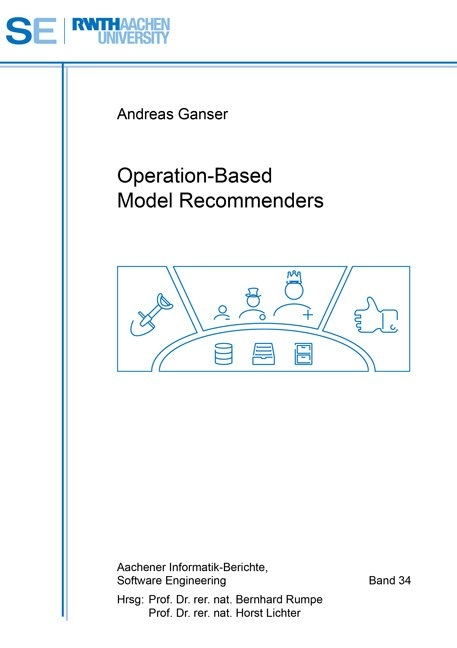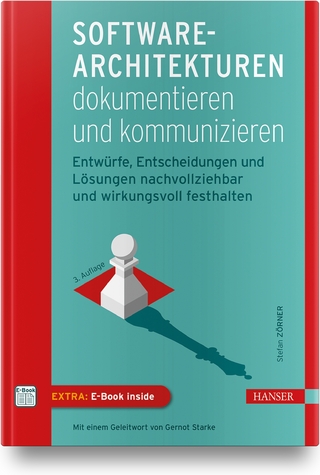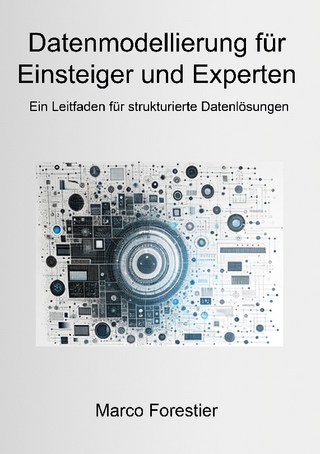
Operation-Based Model Recommenders
Seiten
2018
Shaker (Verlag)
978-3-8440-5946-5 (ISBN)
Shaker (Verlag)
978-3-8440-5946-5 (ISBN)
- Keine Verlagsinformationen verfügbar
- Artikel merken
For higher-level reuse, i.e., for activities from the preservation until the reutilization of knowledge, we can firstly say that activities involved in reuse do not pay off immediately, but only in the long run. Even worse, all these activities are generally considered tedious, because they expose no immediate benefit. Thus, starting with the harvesting of knowledge and storage for later reuse, continuing with looking for suitable harvested knowledge, i.e., retrieving it, and finishing with reusing (or reutilizing) it, these activities are perceived as rather unappealing. Fortunately, integrated development environments for lower-level reuse, e.g., source code, have already demonstrated how to approach this using completion mechanisms that foster enhanced querying and recommender systems. This places the experience of whole communities at the fingertips of every programmer. Yet, there is no such support for modeling.
Hence, we approach activities dealing with challenges denoted by representation, harvesting, evolution, and retrieval. These challenges shall be addressed, and, eventually, we contribute an approach tailored for modeling with UML or models akin to class diagrams, and this approach turns out to be a knowledge-based recommender system based on property graphs and metagraphs suitable for a broader scope. Further, we provide a cookbook for developing such a system, which includes schema for model recommendation production for operation-based model recommenders based on our deployment experiences with HEREMES. As we are taking into account contextual information monitored as modeling operations, this too could be denoted as an operation-and-knowledge-based recommender system that (semi-)automates tedious activities.
Hence, we approach activities dealing with challenges denoted by representation, harvesting, evolution, and retrieval. These challenges shall be addressed, and, eventually, we contribute an approach tailored for modeling with UML or models akin to class diagrams, and this approach turns out to be a knowledge-based recommender system based on property graphs and metagraphs suitable for a broader scope. Further, we provide a cookbook for developing such a system, which includes schema for model recommendation production for operation-based model recommenders based on our deployment experiences with HEREMES. As we are taking into account contextual information monitored as modeling operations, this too could be denoted as an operation-and-knowledge-based recommender system that (semi-)automates tedious activities.
| Erscheinungsdatum | 19.05.2018 |
|---|---|
| Reihe/Serie | Aachener Informatik Berichte Software Engineering ; 34 |
| Mitarbeit |
Herausgeber (Serie): Bernhard Rumpe Stellvertretende Herausgeber: Horst Lichter |
| Verlagsort | Aachen |
| Sprache | englisch |
| Maße | 170 x 240 mm |
| Gewicht | 527 g |
| Themenwelt | Mathematik / Informatik ► Informatik ► Programmiersprachen / -werkzeuge |
| Informatik ► Software Entwicklung ► UML | |
| Schlagworte | Model • Recommender Systems • Reuse • Software engineering • UML |
| ISBN-10 | 3-8440-5946-6 / 3844059466 |
| ISBN-13 | 978-3-8440-5946-5 / 9783844059465 |
| Zustand | Neuware |
| Haben Sie eine Frage zum Produkt? |
Mehr entdecken
aus dem Bereich
aus dem Bereich
Ein Leitfaden für strukturierte Datenlösungen
Buch | Hardcover (2023)
BoD – Books on Demand (Verlag)
59,99 €


